#cannot believe the lighting really said ancient greece baby
Photo
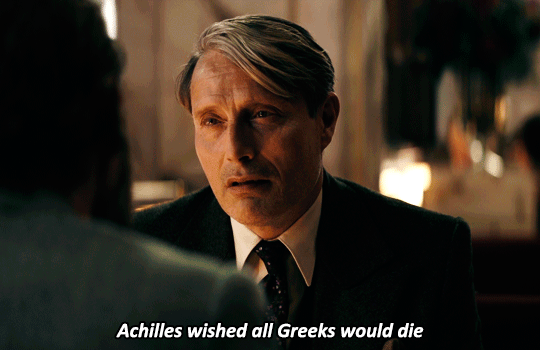

FANTASTIC BEASTS: THE SECRETS OF DUMBLEDORE + Hannibal
#albus is so achilles#achilles refused (to help greeks because of agamemnon who had insulted him)#and patroclus “became achilles on the field of war”#albus inspired and encouraged him#and gellert holds on to and fights for the (their) ideas but without him#and the wizarding world obviously would be their troy 🥺#and “took divine intervention to bring them down” matches perfectly with “let’s call it fate”#thank you for coming to my ted talk#jude's eyes are like ⬆️⬇️⬆️#that little sparkle 🥺🥰 it was pure chance#cannot believe the lighting really said ancient greece baby#incorrect quotes#achilles and patroclus#secrets of dumbledore#grindeldore#albus dumbledore#gellert grindelwald#jude law#mads mikkelsen#user iulia#.gif
434 notes
·
View notes
Text
List of 50 wedding superstitions across the world
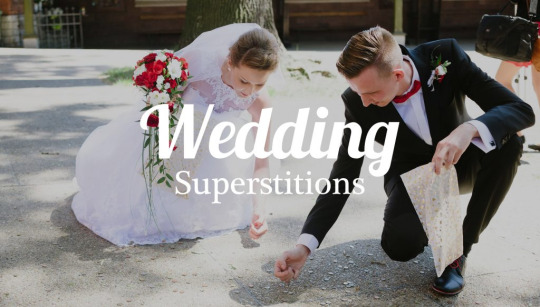
Weddings in any culture, religion, state, country, and continent are a blend of ancient rituals, traditions, customs, faiths and beliefs. Every culture and religion in the world follow their own set of beliefs and rituals during their wedding traditions. However, not just beliefs there are superstitions as well.
Well, in this post I am sharing with you the list of wedding superstitions followed across the world
1. During the wedding, the happy couple in Greece hand out sugar-coated almonds, which is called ‘koufeta’, to their guests. The white part of the almond symbolizes purity, the egg shape stands for fertility. The hardness of the almond represents the endurance of marriage, and the sugar in almonds represents the sweetness of married life. It is to wish the newly married couple “happiness, children, health, wealth, and a long life.” According to tradition here, if an unmarried girl take the blessed snacks and sleep with it under her pillow for three nights, she’ll see her future husband!
2. In Egypt, during a wedding, the hands of the couple are tied to depict the union of two souls.
3. Saturday is considered the unluckiest day for tying the knot in English culture.
4. According to the Greeks and Romans, a veil worn by Christian brides on their face during the wedding protects them from the evil spirits who were jealous of her happiness.
5. In order to ensure long marriages, couples in Italy attempt to break a vase or glass during their wedding. And this tradition actually states that the number of pieces the glass will be smashed in will determine the number of years they will be happily wed. More number of pieces means more number of years.
6. During an Egyptian wedding, all women wedding guests would pinch the bride before the wedding and this is considered a sign of good luck in Egypt.
7. According to Hindu wedding traditions, brides are not allowed to take their old clothes on their wedding. They have to distribute all their old clothes to their siblings, cousins, or to anybody else.
8. Many English traditions consider finding an eight-legged creature (spider) in/on couple’s wedding outfit a sign of good luck. I am sure people might get scared for a while
9. In Indian weddings, while leaving their house with their partners, newly brides throw rice back to their house without looking back. And the tradition states that even after the daughter of the family (i.e. bride) is gone to her new house, her family will always prosper and be happy. Because girls are considered LAKSHMI (which literally means money & prosperity) in most traditions in India.
10. In Indian weddings rice is thrown on the newlyweds to welcome them at the groom’s house.
11. In Czech Republic, peas are thrown on the newly-weds for welcoming them.
12. Believe it or not, any bride who passes the path of a monk, nun or any such religious figure will have a life of poverty and infertility after her wedding.
13. Wearing “something old” symbolizes the bride’s past, while the “something new” represents the couple’s happy future. The bride in English tradition is supposed to get her “something borrowed” from someone (who is happily married) in the hope that, that person’s good fortune will come to her as well. While, “Something blue” denotes fidelity and love.
14. Bride & Groom seeing each other before the marriage is considered a bad omen in most of Indian weddings, especially in the arranged marriages. However, the tradition is changed to a great extent, now couples meet each other before their wedding. Earlier, it was believed that if the couple saw each other before the ceremony, chances are they may change their minds about the wedding.
15. Brides after their mehndi ceremony in India cannot move out of their house to avoid evil spirits.
16. Brides are not allowed to write or use their married name or monogram before their wedding, it is believed that if she does so the wedding will not take place.
17. In one province of China, brides are supposed to spend an hour a day crying in the months leading up to the nuptials day. However, in another, couples have to slaughter a chicken to find out the perfect wedding date. And in some regions there couples are not allowed to attend another wedding, a funeral, or to visit a woman who’s just delivered the baby in the three months before their big day in order to avoid a clash of good fortune.
18. According to South African wedding traditions, the bride’s parents along with the groom carry a fire from their own hearths to the newlywed couple’s hearths and light it.
19. According to old tradition, a knife should not be given as a gift on a wedding as it signifies a broken relationship and bad luck. If somehow knives are on your registry, in that case you can give the gift giver a penny or a small amount. And then it will become a purchase, not a gift.
20. This one is from Medieval Europe, in order to avoid bringing in any evil spirits, the groom used to carry the bride into their new home. As, it was believed that a bride was extra vulnerable to evil spirits, especially through the soles of her feet.
21. In some cultures, it is supposed to be good luck for the bride to cry on her wedding day. As, it simply states that the bride has shed all her tears and do not have any to shed during her marriage. So brides don’t mind crying, apply waterproof make-up and get teary
22. In the Hindu wedding tradition, the color of the henna or Mehndi that the bride applies on her hands depicts how much or not her future mother-in-law and husband will love her. It is believed that the darker the color of the henna, the stronger will be the bond of love and affection between the daughter-in-law and mother –in- law, and the couple, and the lighter the color, the lesser the bond!!
23. In most of the cultures the brides stand on the left of the groom, because in the olden days, the groom had to win his bride, and for that he needed his right hand free to fight the other swain in line.
24. According to English traditions, for a blissful married life Wednesday is the ideal day to get married.
25. Brides in Mexico aren’t all dressed in white. Many brides sew three colorful ribbons to their undergarments. These three colors are yellow, blue, and red. A yellow ribbon symbolizes the blessing of food, blue represents financial luck, and red is meant to have a passionate relationship.
26. In Scotland, brides before getting dressed in white, must first be drenched in slime. Pre-nuptials, the bride’s friends and her groom slather on her all the smelly foods such as, curdled milk, rotten eggs, and fish sauces. The tradition is meant to prepare couples for the hardships of married life. Also, it is done to avoid evil spirits.
27. In India, brides and grooms are bathed with turmeric and curd based ubtan on the day of their wedding. The tradition is said to be done in order to have clear and glowing skin and to purify themselves.
28. In Morocco, brides take a bath with milk to purify themselves.
29. In Poland, brides are supposed to pay close attention to their footwear. According to the tradition in Poland, if the bride wears open-toed heels on her wedding their future wealth and fortune would fly right through the opening.
30. In Egypt, for an entire week after the wedding, the newlyweds are given their time to relax and do whatever they wish to do, and the family of the bride does all the cooking.
31. In North Indian weddings, brides are not allowed to choose or see their own chooda (a set of bangles meant for the bride) until they get dressed in their bridal outfits. Seeing her chooda before her wedding is considered to be a bad omen for the bride and her new beginning.
32. In North India, Punjabi brides are supposed to wear their wedding chooda for at least a forty-five days to a year after their wedding.
33. According to Hindu tradition, heavy rainfall on the wedding day symbolizes fertility, cleansing, good luck and fortune.
34. In some cultures, pearls are considered as a symbol of wealth and love, but in Nicaraguan brides are not allowed to touch them. According to the Latin cultures, pearls stands for “tears of the sea” and wearing them on your wedding day is bad as it is the sign of sadness that is likely to show up in your married life as well.
35. In Kenya, the Maasai people drench newlyweds with good fortune. The father of the bride here spits on her head and chest while she leaves the village with her new husband. The act simply means, by acting disrespectfully, rather than heaping the couple with praise, they avoid alluring fate and bringing bad luck to the newlywed couple.
36. As part of their pre-wedding celebrations, Indian brides apply henna to their hands and feet in a pre-wedding ceremony called Mehndi. More often than not, the groom’s initial or the name is included in the elaborate henna designs. If the groom is able to locate his name or initials on the wedding night, the couple is thought to have good luck.
37. Like Indian brides, brides in the Middle East apply henna on their hands and feet in order to keep the evil eye away from them.
38. In Holland, a Pine tree is planted outside the house of the newlywed couple in order to bring them luck and also planting of Pine tree symbolizes fertility.
39. This is really amazing. Brides in Sweden according to the traditions, take a silver coin from her father and a gold coin from her mother and place them in her shoes. The tradition states that the bride will never be without money ever.
40. In France, there is a unique tradition of keeping the bad luck away and the tradition is called La Soupe. According to the tradition the wedding guests will gather the leftovers from the reception, or some tasty treats like champagne and chocolates—and place them into a toilet or toilet-like bowl for the bride and groom to eat. Well… No words
41. Well, this is one-of-its-kind wedding tradition, where to have good luck by their side after the wedding, couples let a cat eat some food from their shoe (the best would be the left shoe).
42. According to some wedding superstition, if a single unmarried women sleep with a slice of a wedding cake (of course from a wedding they attended) they can dream of their future husband.
43. Well, in almost all the cultures wedding gifts are given by wedding guests only. But in the Finnish tradition, the bride personally goes door to door in order to collect her wedding gifts that too in a pillowcase and she is accompanied by an older married man. The tradition simply signifies a long-lasting married life.
44. In many cultures, if the younger sister is getting married before the older one, because the older sister couldn’t get wedding alliance, then the older sister should dance barefoot at her younger sister’s wedding to get the groom.
45. Well, the very famous trend of cutting the wedding cake on the wedding has come from Rome. In olden days wedding guests would place a loaf of bread on the bride’s head and break it in order to ensure fertility.
46. In most of the western countries, June weddings are very popular. And the reason behind June weddings is – The Roman goddess Juno, who is considered to rule over marriage, childbirth and the hearth.
47. Most of the weddings in Indian system happens in Brahma Muhurta as it is considered the best time to do any ceremonial act or to get hitched.
48. In Irish weddings, bells are traditionally chimed to keep evil spirits away and to ensure a harmonious married life.
49. In most Indian wedding traditions, seven rounds by the fire are taken by the couple during their wedding as it is considered auspicious. And in all the seven rounds they make promises or say their wedding vows to each other that they follow after their wedding. Promise like, they will respect each other etc.
50. According to Irish traditions, ringing bells symbolizes good luck and hence, Irish brides carry small bells in their bouquets as a reminder of their sacred wedding vows after the wedding. Ringing bells are a common gift for newlyweds here.
Wrapping up,
However, superstitions are now sloping down in almost every culture, religion and country in the world. Now it is absolutely up to the couples whether they want to follow them or not. But if you feel that doing or not doing a particular thing or ritual will ensure a happy marriage and fertility, then you are absolutely free to follow these rituals. The idea is to have a happy married life, and this is up to you absolutely. If you feel following them do them, if not then simply chuck them…
Happy Wedding…
Source: Happy Wedding App
#Wedding#weddings#superstition#ritual#indian#traditional#wedding cake#cultures#wedding tradition#Morocco#Mexico#wedding gifts#North Indian weddings#Poland#Scotland#English traditions#Indian weddings#China#Egypt
0 notes
Photo






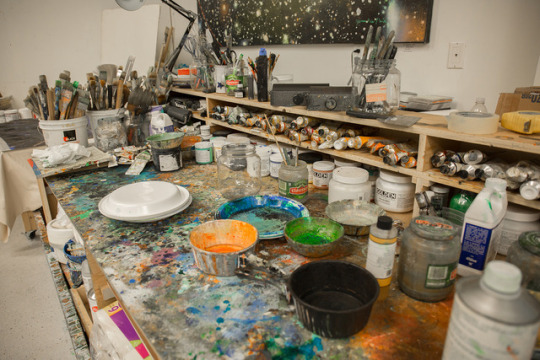
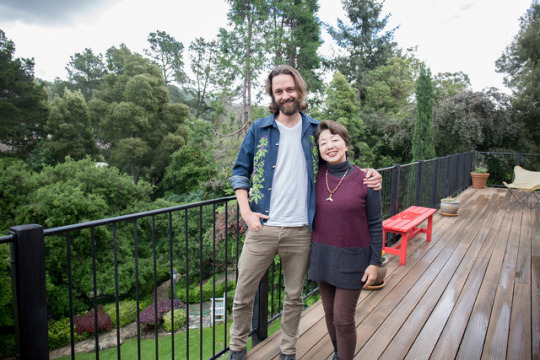
Younhee Paik (MFA, 1973) and Eric Carson (MFA, 2017)—whose practices draw parallels between natural and human systems—converse on SFAI, art, and the interconnectedness of it all.
Carson is the inaugural recipient for Paik’s annual scholarship exhibition at her Studio for Art and Music, inspired by her time at SFAI in the 1970s and her mentor, professor Bruce McGaw. Eric Carson: The New Cosmograph is on view June 12 through July 10, with an opening reception on June 10.
Younhee Paik (YP): So I graduated a long time ago, in 1973—maybe before you were born.
Eric Carson (EC): I was born in 1983. I love that. I will graduate this year, of course.
YP: I'm that much older and you are twice taller than me.
EC: (Laughs) How was SFAI when you were there?
YP: Wonderful. It was my place of inspiration. I really liked the freedom in the school. It was a long time ago, it was hippie time. I just spent all day there. I couldn't speak English, so all I can do is just paint.
I had a BFA from Korea, but I wanted to take a couple of undergraduate courses at SFAI before I applied to graduate school. Some of my teachers were Bruce McGaw, Arden Knight, and Julius Hatofsky—who later became my advisor in graduate school. He didn't speak much but whenever he make some comment, it was really important to me. He was my mentor for 40 years, along with Bruce [McGaw].
There is a long story before I got into graduate school—the first time I failed. I was so sad, and wanted to go back to home to Korea. I went to my teacher Julius [Hatofsky] to ask for a recommendation, and explained my situation: that I wanted to go to graduate school before I started a family. He listened to me and said, "I consider again." He went back to his friend Alvin Light—who was the dean at the time—at Harrison's Bar, where they were always drinking. When he came back, he said "Younhee, I think you are accepted."
I’d gotten into a MFA program finally, and was so excited. I had been asked to bring up several original works to the interview, and I drove up to San Francisco from San Luis Obispo with five medium-sized painting on top of my Volkswagen. We tied the paintings well on the way to the Art Institute, but not well afterwards; in the middle of the trip, the paintings flew off!
EC: No!
YP: Luckily it didn’t cause any car accidents, and soon after there were eight highway patrol blocking the Bayshore Freeway. So we dashed and collected all five paintings—I was able to save some of them. I still have one painting in Korea.
The second I started graduate school, SFAI was really an inspirational place. I felt like it was a big moment, whispering to me, "For the rest of your life, you cannot live without painting." Ever since then I really didn't think about anything else than painting. Even though I had a baby later on, every day I painted—I only slept five hours for 20 years. So that was the beginning of my San Francisco Art Institute influence. What about you?
EC: Well, I grew up in Washington State, and I got a bachelor's degree at Central Washington University, where I had a couple of really good teachers. I worked for about 10 years after school in an operations department at a museum. That really shaped my practice—I knew what I wanted to paint. It showed me the way that art has to interface with philanthropy and institutional structures to be exhibited. My practice became about making these really dense, symbolic drawings.
During this time, I met my partner, and we got married. She is a social worker—a real artist. I got into SFAI, and we moved to San Francisco two years ago.
What's been really great for me at SFAI is that it’s not limited—like you said. I came in painting and I have done everything since. I came specifically to study with Dewey Crumpler and Tim Berry, but along the way every faculty member has pushed me. I’ve really grown my practice away from pseudo-religious imagery and into visual structures that can include all kinds of things.

YP: Are you religious?
EC: I grew up really Catholic, and that was my spiritual language for a long time until I broke away from that. I bring that kind of critique and ritual into my work.
YP: My paintings have something religious about them too. I'm Christian, but I really believe all religions are all about truth. I think art, philosophy, science, and religion form a pyramid, all reaching towards truth.
EC: I agree. You can track the evolution of right wing Christianity from the Abrahamic tradition; Zen Buddhism all the way back to its Hindu origin; or postmodern discourse to Ancient Greece. They're all approaching this same point. Likewise, our current society’s late stage capitalism is another kind of growth that has to be considered in this larger picture of evolution. I think that’s what art can do.
I keep looking at the cathedral floor plans in your work, and see parallels with my own. I think that the imposition of those Romanesque floor plans onto another natural grid—the stars—also shows a truth.
YP: Yes, I try to combine the universe, Heaven and the Earth. That's why I put the architecture of Earth—the floor plan—with the stars: a bird's eye view.
YP: I'm glad the Art Institute faculty choose you so you can connect my painting.
EC: Me too. Our work fits together really well because you have these star patterns, topographies, and cathedral patterns.
Are you familiar with the idea of a fractal? It's a shape that contains and grows within itself, like a seashell. It's like a spiral, a fractal of quarter circles. That’s one of the patterns that I look at in my work, and tie conceptually to other ideas: like a star’s cycle of explosion and formation, or feudalism becoming capitalism.
YP: Your paintings contain more science, right?
EC: I would say so, but it's all a question of scale. We look at ourselves in church; we look at stars in the galaxy; we look at the galaxy as a super cluster—and it can go out from there.
Also, the way we both push painting with scale is interesting.
YP: Yes, I started pushing my paintings towards installation about 20 years ago, around the time my mother passed away. She was in the hospital for a year and a half, and could only look up at an empty ceiling. This inspired me to think about how else to hang my work, especially since my mother always encouraged me to pursue my work. I was thinking about her all the time, and started painting the sky for her, intended to hang on the ceiling. My first installation of this series was displayed in the TOTAL Museum in Korea (1999); I named it "Invitation for Rest," as I want her to rest well.
As I did more paintings, I thought I could put them on the floor and on the ceiling, so they can echo each other. I’ve done almost 70 pieces now.
EC: Right on.
YP: I paint on the floor with lots of water and pour paint, like dye, so it can smear and make interesting mistakes. While it’s spreading, I shake the canvas—a very spontaneous and unpredictable technique. I love the use of water—it’s always my inspiration.
EC: Well, there's a lot there. The process of gravity and dye making the imagery creates the same pattern as a star making a nebula in space, just at a different scale.
YC: Right.
EC: I started pushing the scale of my paintings here at SFAI. I was doing work primarily with acrylic and markers at first, and got inspired by the large-scale work of Paul Laffoley, which blurs the line between art and craft. That idea pushed me into making an architectural model: a three-dimensional way to read my paintings. From there I made a deck of playing cards, and then ventured to installation with a floor to ceiling piece in the Diego Rivera Gallery. It was an interactive blind spot test where people could come up to it and move these magnetic tiles, which were loaded with various imagery and logos from the internet, such as iconography from Instagram, the United States’ political parties, and a Navajo sand painting. When the nodes were moved, new connections were formed—both arbitrary and personal. To me it mimics how we look at the internet. Everyday I photographed how people interacted with the piece.
YP: So you let people play with it freely?
EC: Yes, but within a mandala structure—I see it as a similar way someone might navigate my paintings visually.
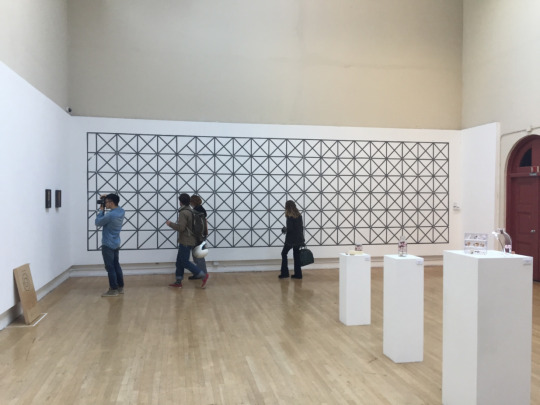

EC: So tell me why you were inspired to found this scholarship for current students like myself?
YP: I always thought I had so much luck in my life. My parents provided so much to me, my children grew up well, and I was able to paint every day. I feel like God gave me too much, so I like to give to other people too. My father always said that we should give back to society, so when I built this house I knew that this going to be a place for community. I had a thought as I was hanging my paintings in the space, that I could share the space with someone else’s work from the Art Institute. I founded this scholarship from this idea.
Additionally, I’ve been teaching art classes to 14 special needs children for the past three years. Before I started this program, I was volunteering Creative Growth and thought, "Why can't I use one of my rooms?" Sometimes I learn more than I give because their minds are so pure and very genuine.
EC: It's helpful for me to have the opportunity that you're providing because it's going to keep me in the area. It's always great to meet other artists who are practicing and made a career out of it. That's my aspiration as well, so the example is appreciated. I'll be able to carry momentum from the Graduate Exhibition and can just continue to build, like you said, from show to show to show.
YP: When I finished graduate school, I was working in the garage at that time but there was no place to show. So, you know what I did? I started approaching galleries.
EC: You just walked in cold?
YP: I just walked in and said, "Would you like to see my work?" Ever since then I had many shows. I’ve had more than 45 one person exhibitions, and museum shows in Korea, and in the United States at the Triton Museum and San Jose Museum show.
EC: That's amazing, good for you.
YP: I had courage but I didn't have any idea what I was doing.
EC: Yeah, give me some advice.
YP: Be courageous. You just have to show everything. Don't worry what curators or gallerists say, or how they act. You might feel insulted, but next morning just erase it and you go back to painting.
EC: Right on.

Eric Carson: The New Cosmograph is on view June 12‑July 10 by appointment at Younhee Paik’s Studio for Art and Music—opening reception on June 10 from 6-10pm and a special musical performance on June 11 at 3pm. »
New work by Younhee Paik will open September 14 at Mills College—In-Between Places: Korean-American Artists in the Bay Area »
Image credits: 1) Photo by Marco David; 2) Eric Carson, Mandala #31, 2016; Gouache on paper, 24 x 18 inches; 3) Eric Carson, Banner of Heaven, 2016; Acrylic on canvas, 93 x 60 inches; 4-8) Photos by Marco David; 9) Eric Carson, Mandala #33 (blind spot test), 2017; 10) Eric Carson, Detail of Mandala #33 (blind spot test), 2017; 11) Photo by Marco David.
2 notes
·
View notes